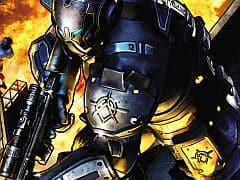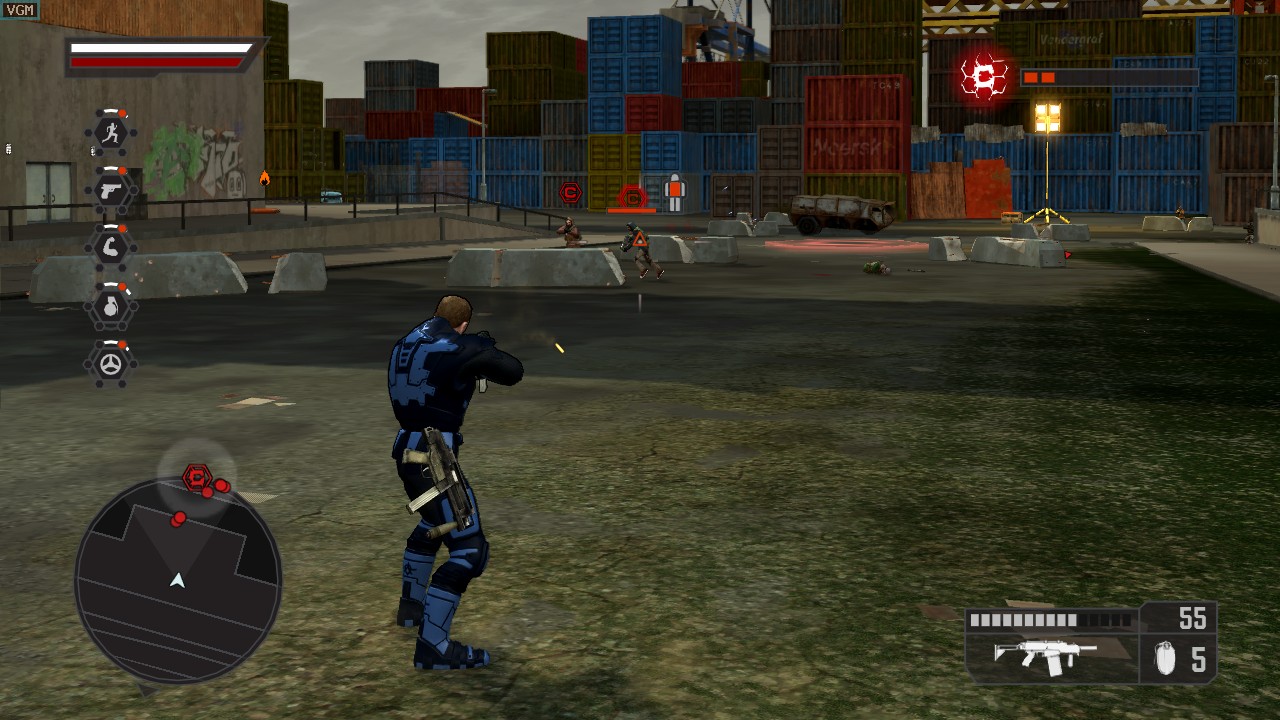You can trust VideoGamer. Our team of gaming experts spend hours testing and reviewing the latest games, to ensure you're reading the most comprehensive guide possible. Rest assured, all imagery and advice is unique and original. Check out how we test and review games here
When I was younger, my parents would frequently boot me out of the house, reminding me as I left that I’d get ‘square eyes’ if I played anymore video games. It was on these occasions, deprived from my beloved games that I’d venture off to the local playground. It was furnished with the usual ensemble of swings, slides and monkey bars you’d expect from such a place, as well as one of those swinging tyres that other children would push to incredulous heights. It was awesome. At times, I’d ignore the equipment altogether, however, entertaining myself by walking the perimeter of the playground balancing on the fence, or timing myself to see how quickly I could run an obstacle course I’d invented. I loved the fact that nobody could tell me what to do in the playground; there were no rules or stipulations. It was an environment where you could make your own fun.
The same can be said for the sandbox genre, which throws traditional game design out of the window in favour of action orchestrated by the player. Whilst Rockstar might have popularised the genre with Grand Theft Auto, it was Realtime Worlds and Crackdown that arguably made the genre their own. Just like the free-form nature of a children’s playground, Crackdown offered a framework for fun. If purging the streets of criminals ever got mundane, you could go off and collect agility orbs, indulge in street races, or climb to the highest point in the city before leaping off for that classic ‘Base Jumper’ achievement. The game never forced you into doing anything you didn’t want to – you chose what you did, when you did it, and when to move on.
Pacific City was the metaphorical playground of the first Crackdown; a sprawling metropolis that extended as far as the eye could see in every direction. Assuming the role of a genetically enhanced super agent, nowhere was off limits. You could scale buildings in a single bound, run quicker than the wind, and throw vehicles around as if they were made of papier-mâché. The game gave you some weapons, some vehicles, and a range of skills, and just let you get on with things. The world was your oyster.
With Realtime Worlds busy with APB, the creative reins were handed to Ruffian Games for the sequel. Rather fittingly, the young Scottish start-up is formed from members of the original Crackdown team, and is based just down the road from Realtime Worlds in Dundee. The sequel takes place ten years after the events of the original, which judging by the efforts of the Agency ten years previous, should be the safest place in the world. No such luck. Pacific City is still teeming with criminal activity, and the city requires the help of the Peace Keepers now more than ever. An underground resistance known as Cell are at the root of the problems, who have taken the law into their own hands after losing their faith in the Agency.
The first game got some flak for its uninspired campaign, which was a mindless case of defeating gang leaders until you reached the ‘boss’ of each of the three factions. There was little else to it. This is a problem Ruffian Games has addressed with the sequel, bringing in some much needed variation and an over arching objective to help give the campaign a better sense of direction. The original campaign was also considered far too easy; no enemies were a match for the omnipotent powers of a level 5 Agent, which negated any sense of challenge. In order to even the odds, Ruffian made the decision to introduce a new enemy.
After the events of the first game, a viral outbreak began to turn the citizens of Pacific City into despicable mutants, affectionately referred to as the Freaks. While Cell runs things during the day, the city is surrendered to the Freaks at night. As soon as the sun sets, the creatures pour out of the woodwork, cluttering the streets and sidewalks with their aimless lumbering. At times, there’ll be literally hundreds of enemies on screen at once, surging towards you like a zombified hive of bees. While the frame-rate seemed to hold up admirably under these conditions, the low-poly character models looked less than admirable up close. Still, such numbers of enemies wouldn’t have been possible with high-poly models, and you’d lose out on the joy of mowing down hundreds of mutants in an Agency super car.
Visually, it wasn’t just the character models that had me worried. The game as a whole seemed to have lost some of its charm on its way to becoming a sequel. Perhaps it was just me, but it didn’t feel like the Crackdown I knew and loved. It was hard to put my finger on exactly how, but visually, the game was a disappointment.
The customisation aspects at the start of the game felt lacklustre too, with very few attributes that could be tweaked to inject some personality into an agent. There was a stock of perhaps four or five face types, each one more unattractive than the last. I was in one of those situations where I would never be happy with the character I was about to create. Thankfully, my agent’s shortcomings in the facial department were of no consequence in the grand scheme of things, as it wasn’t long before my efforts in game were rewarded with armour upgrades, the first of which being a menacing face mask. I looked bad-ass.
My concerns about Crackdown 2 were short-lived, quickly fading into the background as I slipped into the familiar routine of levelling up my Agent. Like many others, my fondest memories of the original game are of the obsessive hunt for agility orbs. The ‘crack of Crackdown’, as they became known, have returned for the sequel. 500 of the blighters, in fact, placed in awkward and seemingly inaccessible spots all around the city. Whilst primarily serving to increase your agility (collect enough and you’ll ‘level up’, increasing your jump height and movement speed), the orbs also make the often laborious task of traversing the game that much more entertaining.
Crackdown 2 also introduces Renegade orbs, which aren’t half as easy to snap up as their static counterparts. Renegade orbs require a much more active pursuit to obtain, as they flit about the city with complete disregard for your patience. Catching these will require all of your skill as an Agent, providing the game with even more of the challenge that Ruffian was so keen to bring to the sequel.
Taking to the streets of Pacific City with a friend in the first game was a defining moment for the sandbox genre, and Ruffian Games has been sure to build on that success. Perhaps the most important feature that Crackdown 2 brings to the table is four player co-op, which drastically changes the way you might play the game. While some players might patrol the streets as an intimidating quad of uber-enforcers, others are content to simply do their own thing, fighting crime from different corners of the city.
For those that do decide to chum up, there are all new co-op vehicles such as the Turret Truck and Agency Helicopter which can be exploited for maximum carnage. The campaign has been designed around allowing four players to tackle a challenge however they see fit. Again, Ruffian has gone to great lengths to leave everything up to the player – there’s no right or wrong way to tackle a mission, just a range of options and alternatives.
Fundamental changes such as four-player co-op aside, Crackdown 2 offers the same eclectic mix of features you’d expect from any other sequel. New environments, new vehicles and new guns are all interesting in their own right, but none of these are particularly worthy of discussion. Mag Grenades, on the other hand, I could talk about all day. By far the most interesting addition to an Agent’s arsenal, these sticky grenades form a magnetic bond with other Mag Grenades, allowing players to connect vehicles and other inanimate objects in a web of elasticised magnetism.
The scope of possibility for such a device is vast. Connect a car to a lamppost, for example, and you could pick up the lamppost and swing the car about like a giant magnetised flail. Or, you could attach two grenades to two walls, with a third attached to a car in the middle, creating a slingshot of sorts. The physics that govern the Mag mechanics are perhaps the greatest new toy in the Crackdown playground. I spent far too long messing around with these when I perhaps should have been ploughing through the campaign, but that’s the nature of the open world experience; distraction without consequence.
I left the preview event with the same high I might have felt after leaving the playground when I was seven or eight. I was buzzing from the madness of it all; the unscripted mayhem that seemed to follow me around the city. Saying this, Crackdown has had some fierce competition since it was released back in 2007. Games such as Prototype, Infamous and Just Cause all offer similar experiences and innovate the genre in their own ways. In order to remain king of the playground, Crackdown 2 needs to prove that it can keep up the pace. Gamers are intrinsically drawn to the playgrounds with the best facilities for fun, and the standards today are much higher than they were in 2007.
Crackdown 2 is scheduled for release July 9 on Xbox 360

/https://oimg.videogamer.com/images/be53/crackdown_2_32.jpg)
/https://oimg.videogamer.com/images/2ce6/crackdown_2_30.jpg)






